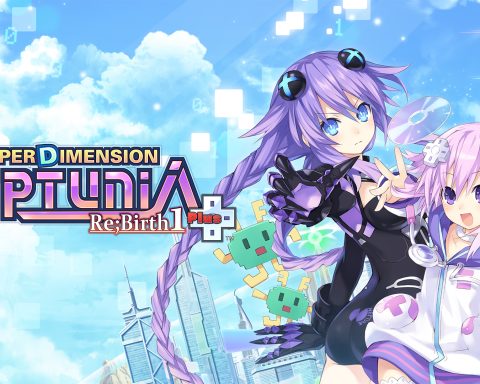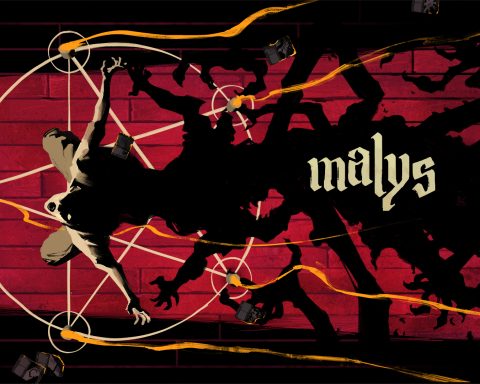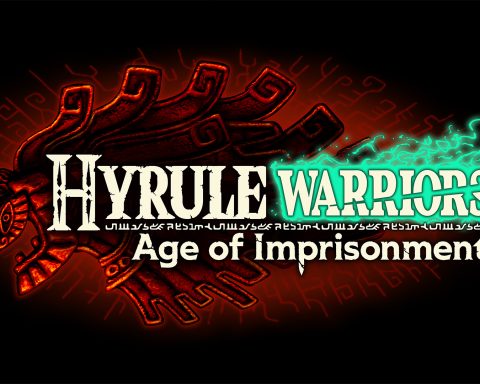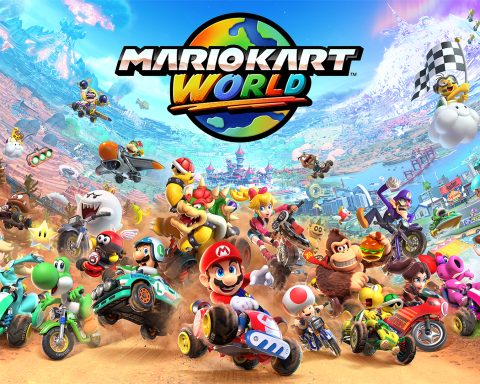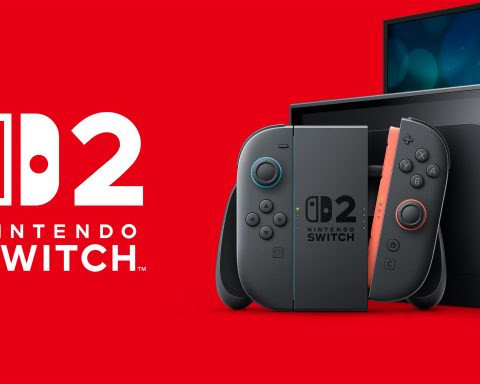Earlier this week we reported the exciting news that a team of ex-NISA staffers had started up their own studio in order to realise the dream and make their own game. Undead Darlings, a mix of dungeon crawler and visual novel, is to be the first game of the newly formed Mr. Tired Media, and it’s a game that we’re immediately interested in.
Because if any western game developers are able to recapture the tone and design of Japanese games, it will be former NISA staff. Specialists in the localisation and marketing of such games they know what works, what doesn’t, and what people like to play.
I sat down to have a chat with one of the Mr. Tired Media co-founders, Ryan Phillips, about the new game, the Kickstarter, and going from NISA to try the indie life. And don’t forget to back the Kickstarter if you like the sound of Undead Darlings!
Related reading: The announcement and first details of Undead Darlings.
Digitally Downloaded (DD): What inspired you and Nick to break away from NISA to make your game?
Ryan Phillips (RP): We had originally thought of the idea to make a visual novel (VN) close to two years before we left NISA, as a sort of side project. About a year before we left, we decided that the art and the idea could be good enough to start a company of our own, so we made plans in late 2013 to leave NISA the following summer. This was also around the time we decided to add some RPG elements to the game, as well as move development to Unity versus using a free pre-existing visual novel engine. This would allow us to develop all aspects of our game in one — pardon the pun — unified platform.
We loved working at NISA and are still on great terms with everyone still there, but ultimately we wanted to have full creative control and freedom over what we did and said. We also wanted to own our own IP.
DD: Where did the idea for Undead Darlings come from?
RP: We all were sitting together at lunch one day in 2012 and were talking about some of the crazy VNs that had been coming out in Japan, and that’s when we started to concoct the idea that we should make something a bit off the wall too.
Originally, the girls were going to be gross in design and it was going to be a full-on parody game, but once we talked a bit more about it, we decided to find a middle ground between undead while still being cute in hopes of catching some of the audience that we were familiar with from our time at NISA.
DD: How do you think your experience with NISA helped with the development of this game?
RP: Working at NISA has helped us immensely. Learning the business side and the back-end of how video games work has been integral in a lot of the decisions we’ve had to make about the game.
On my side, being the PR/Marketing manager has helped a lot since I’ve had a lot of experience with Profit & Loss (P&L) from the Online Store, general marketing, social media & outreach, and also the contacts we had at NISA have been super helpful with giving us coverage. Having managerial experience has helped since we’ve had a lot of artists working on various facets of the game, UI & level designers, plus the programmers. Knowing the marketing side and also being aware of some of the things that didn’t go over too well while at NISA have both really helped us when designing things with the game as well.
For Nick’s side, having been one of the senior members of the localisation team at NISA, he had the opportunity to work closely with the Japanese side of game development and publishing. In particular, he learned how to structure files so that the text can be easily segmented—main script, sub events, system text, database text, and more. Other roles he played aside from “editor” included voice director (although a voice director is also hired for voicing, editors and translators attend all voicing sessions to make sure lines are read in the correct manner, since they understand the context the best), while also being in charge of ESRB submissions for his respective titles, and then acting as a debug coordinator along with the translator…and after that, submission coordinator for whatever console the title is for. This has all helped him to prepare for the publishing side of our business, having had his hands in every step of the process. It should go without saying that working with translated text for several years has also helped him to hone in on what makes a Japanese narrative so appealing to US fans, and now he can try his hand at completely original content while retaining the same narrative style of a Japanese-developed game.
DD: What do you think it is about the dungeon crawler genre that has made it so compelling for so long?
RP: We knew that we wanted to put in a dungeon crawling part to the game, and after playing a lot of Demon Gaze and Dungeon Travelers (PSP version), we felt like it would be within our scope as a startup to be able to handle the level design and battle mechanics for this particular genre. We’ve actually built a custom level editor for the dungeons, so we now have the capacity to build a level’s skeleton fairly quickly (no textures, objects, or lighting—basically what you see in the pre-alpha Kickstarter shots). After that, we can move ahead before gussying the levels up and add in event triggers, gimmicks, switches, etc. We love other RPG genres as well, but the DRPG seemed a particularly approachable fit for our first title and budget.
DD: It’s interesting that your game is so heavily influenced by Japanese game design elements. Was it difficult to create a game that would emulate another culture’s way of thinking and philosophy towards game development?
RP: I think one of the most difficult things we’ve encountered so far with the game design is in regards to the 3D levels. There are a lot of different, slight variations to the core model to go with, like the Etrian Odyssey style of maps with an empty space between each traversable tile, old-school Wizardry dungeons that focus mainly on maze-like layouts, or more wide-open layouts like those seen in several Demon Gaze dungeons. Choosing the one that best fit our engine has been a major challenge.
To go a bit more in-depth, some have walls that are most likely one-sided textures with a gap between each wall (| | vs ||), while others have a single-plane, double-sided wall that often have the same texture on both sides. We could recreate either model using our engine, but when designing levels, picking one or the other each carry their own set of consequences. So…there’s that, plus making our levels feel like they exist in an actual location, i.e. a school, versus the typical “dungeon” has proven to be challenging as well!
Another challenge that awaits us is if we hit the Vita tier in our Kickstarter. We need to be able to make sure that everything can be compressed to less than 4GBs, preferably under 2GB. We have a lot of respect for programmers in Japan for this genre – besides making all the levels, objects, art assets, and the encounter system, they are able to compress the data and keep it under 2GBs — factor in voicing, which can be up to 1GB alone when uncompressed, is a major accomplishment.
Art-wise and battle-wise, I think that we have gotten pretty close to usable code for sure. What will set us apart in regards to battle will probably be our bestiary, since we felt that spicing it up and creating a new set of enemies compared to the usual couldn’t hurt.
DD: We obviously all hope the game reaches its Kickstarter goal, but in the event that it doesn’t, have you got a back-up plan to get the game finished?
RP: We absolutely have a plan B, and even a plan C if the Kickstarter does not pan out. We want to become a studio and are willing to make pretty significant sacrifices in order to do so. Our next line of defense would be to talk to a publisher to see if they would be interested in working with us and helping us to get the game finished. We know a few folks out there, and that is a possibility. We would prefer to self-publish—as that was our original goal when we created the company–but I digress. We have to be flexible, put our pride in a box and slide it under our beds, and remember to stay humble if we want to make it. Plan C would be to possibly forego the larger scope that the RPG elements bring and focus mainly on the VN portion, which is within our grasp for sure since that part of our engine is already built.
DD: Why are you looking to PlayStation as the first platforms aside from PC? What was it about that platform that interested you above iOS, Xbox or Nintendo’s consoles?
RP: We are PlayStation guys through and through. Don’t get us wrong, we know our roots are with Nintendo, and we both like Xbox as much as the next guy. But after working at a Japanese publisher that primarily developed PlayStation games, it’s our first choice. We are educated in the publishing process with Sony more than the other platforms, which was also a factor in this decision.
Genre-wise and fan-base-wise, we know that this is the right direction for us to take as well. We know that Nintendo is a Japanese company, and some folks at Xbox also like Japanese-style games, but for the immediate future, Sony is our choice for sure (outside of PC).
DD: If this game is a success, would you like to turn it into a franchise? Will there be opportunities for sequels?
RP: We would love to make a sequel! We actually talk about it a lot and have a pretty good direction that we’d like to take the story. From the get-go we wanted this to become a franchise. We even want to make the battles go into 2.5D or even 3D if we can, but alas, it all depends on funding and getting the first title out. We have so many ideas for other RPGs, completely new game genres, and a plethora of single-A titles, but we know we can’t let our brains get too far ahead of our wallets for now.
DD: Would you be looking to release the game in Japan in the future? As a reverse localisation, of sorts?
RP: We have purposely made our VN engine localisation friendly for translating it into other languages, including Japanese. There are some factors that would have to be ironed out, like purchasing the fonts for a Japanese localisation (the way fonts are handled in Japan are a bit different than in the US), as well as what the general cost of a localisation would be need to be heavily considered. Who knows, the opportunity to have it localised elsewhere may hit us while we are in the middle of developing another title. But in short, absolutely. We like to dream that it would become popular in Japan and someday we’d even have a Nendoroid of one of our characters–or dare we say an anime? Haha, that’d be a pretty good measure of our success, haha.
DD: Hitsu’s character designs are great! How did you come across her for your game?
RP: We found Hitsu in Artist Alley at Anime Expo 2013. We stayed in touch for a year, and by 2014, we were working with her to get characters sketches, bust-ups, and full-screen 2D CGs. She’s such an amazing artist and an equally awesome person. We are incredibly lucky to be working with her!
Thank you so much for this interview. All of the support really means a lot to us because we’ve had an incredibly challenging year. We are dead-set on getting this game done so that folks can see what we’re able to bring to the table. Again, thank you!
– Matt S.
Editor-in-Chief
Find me on Twitter: @digitallydownld








